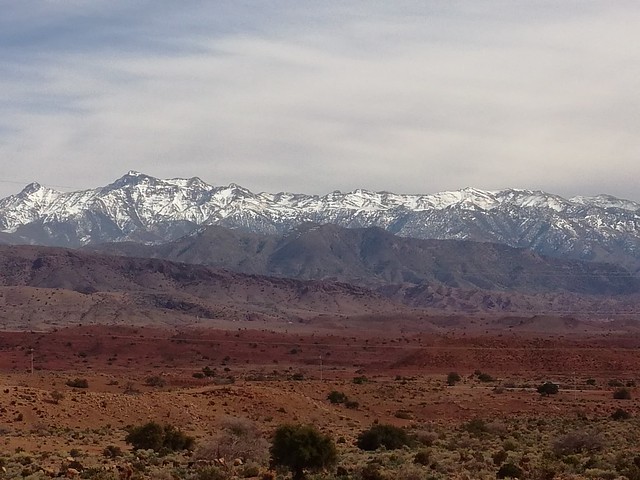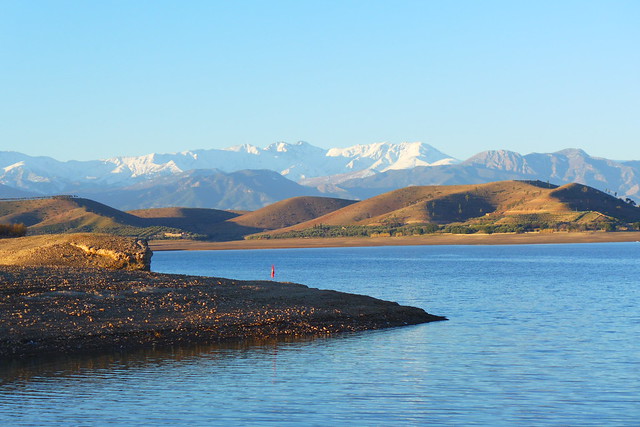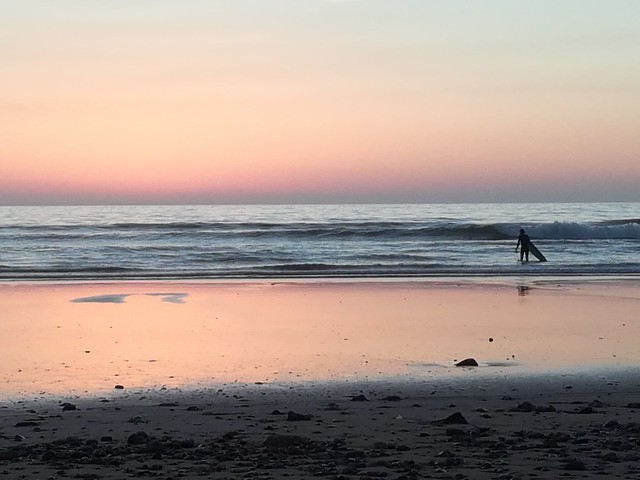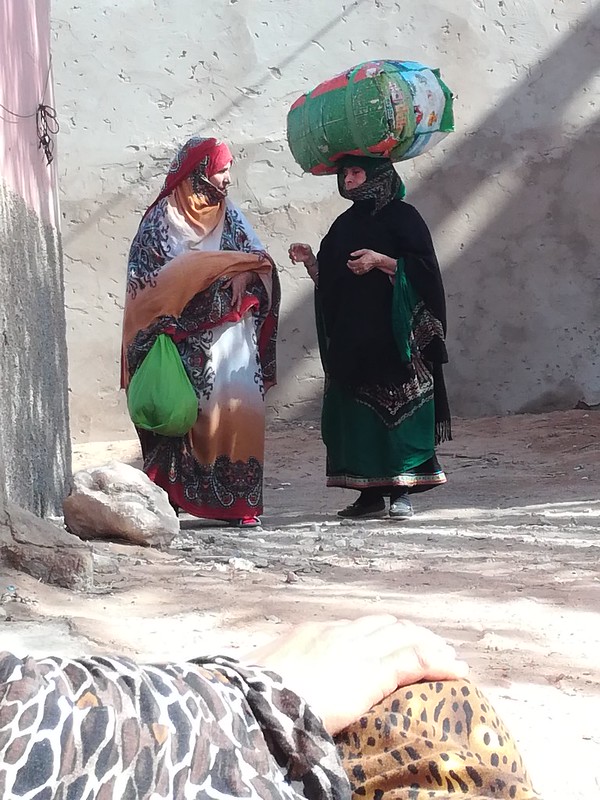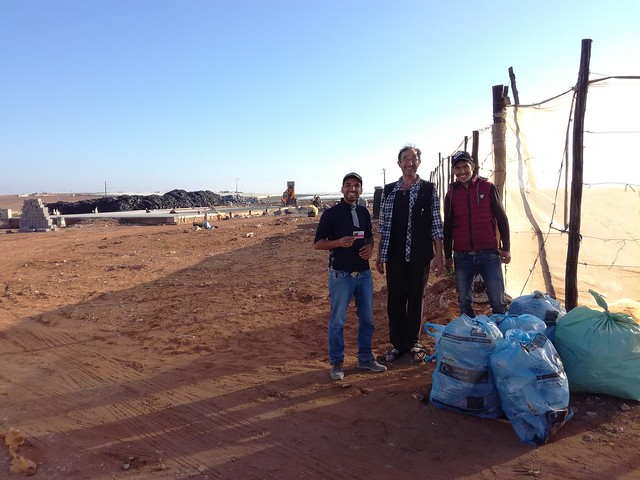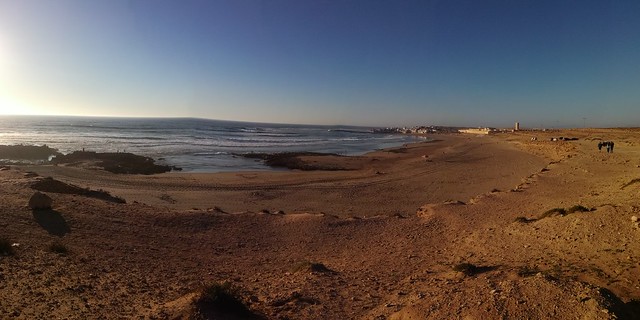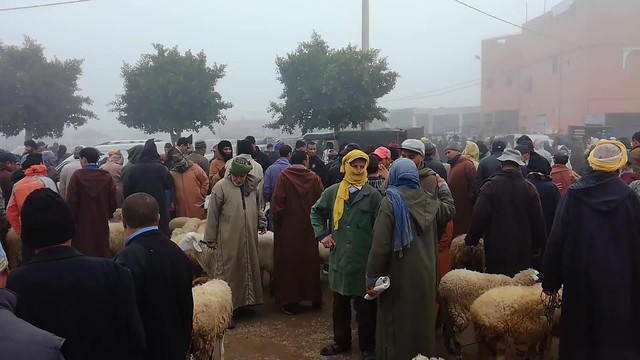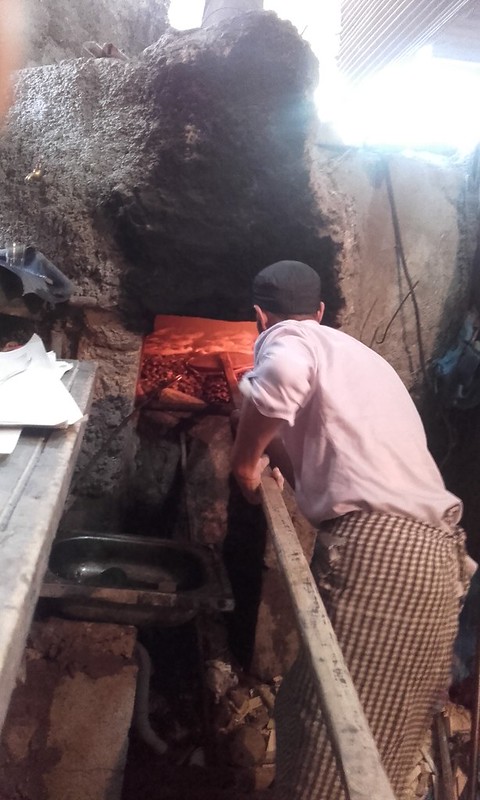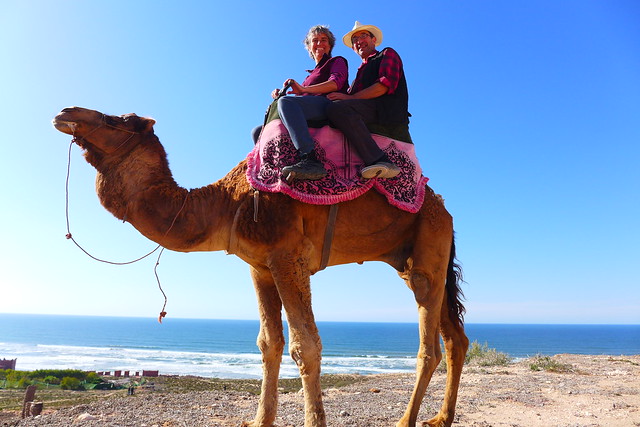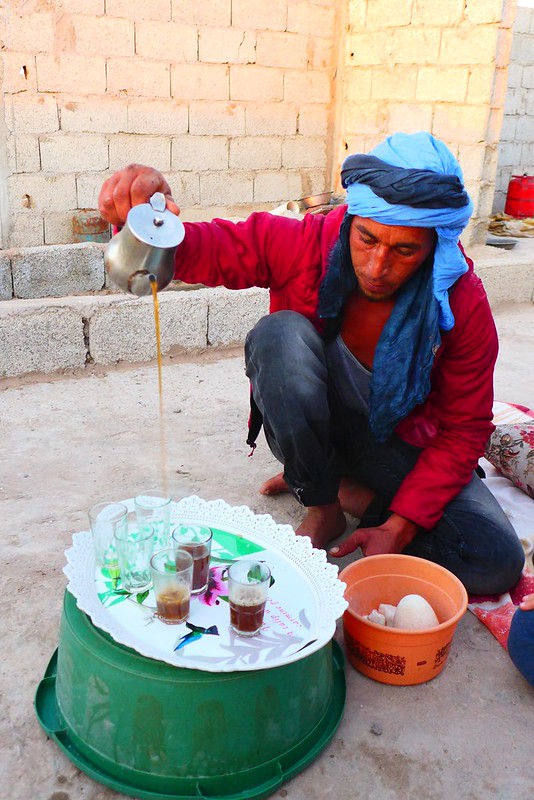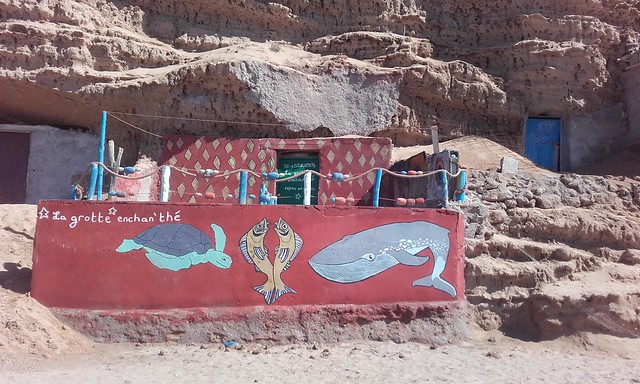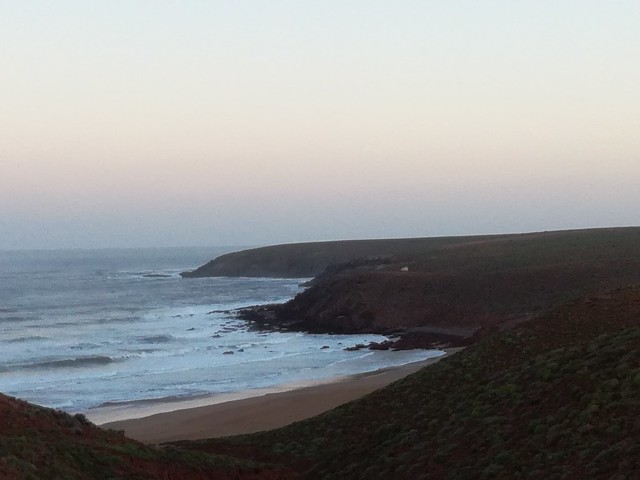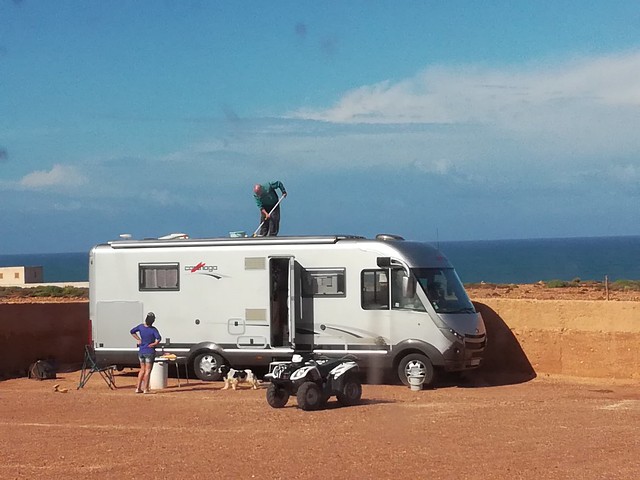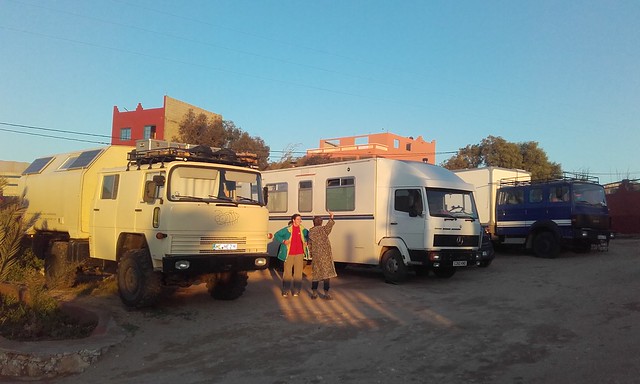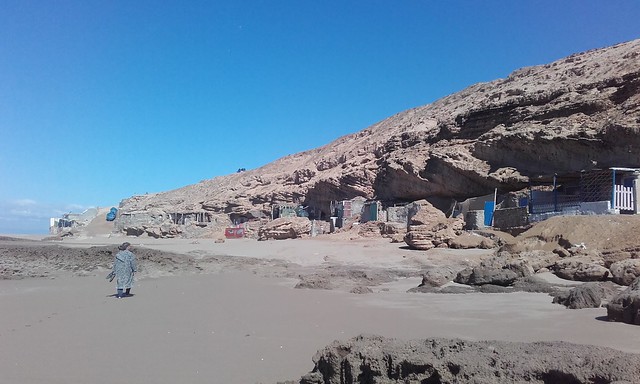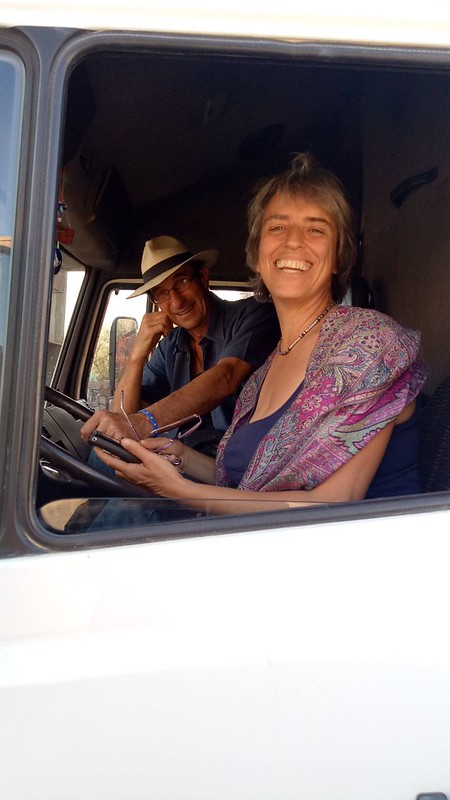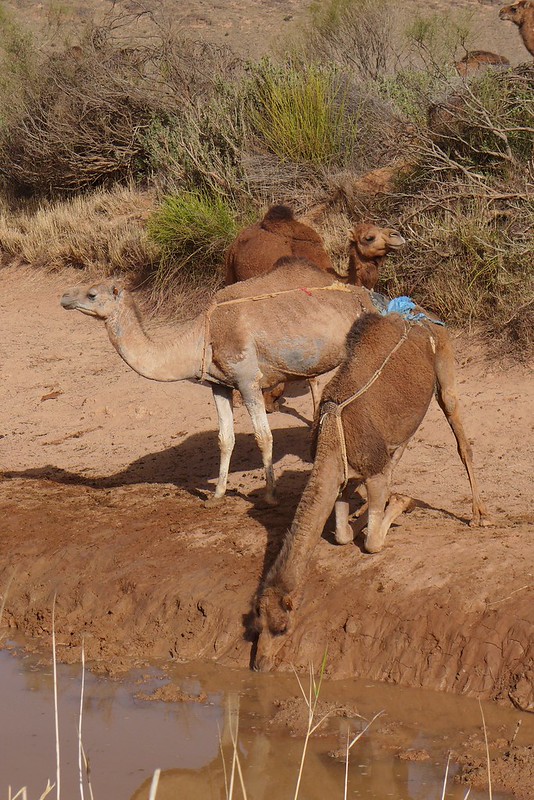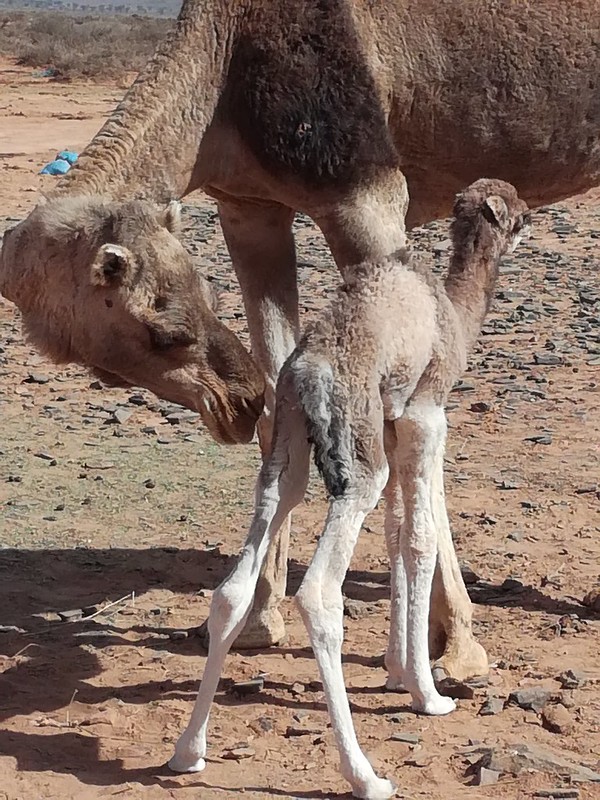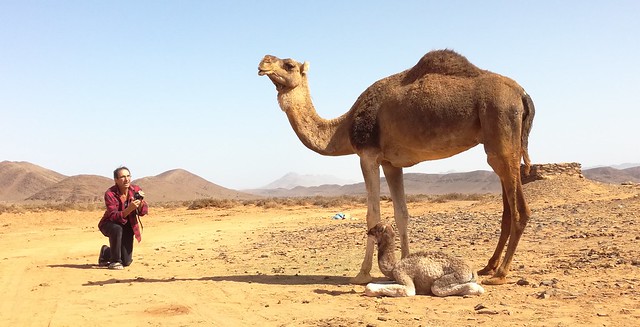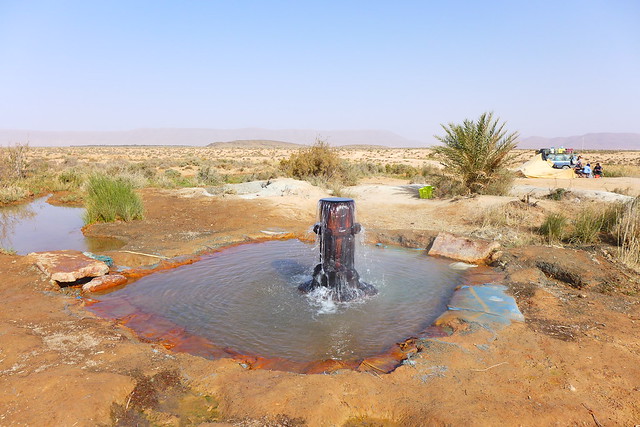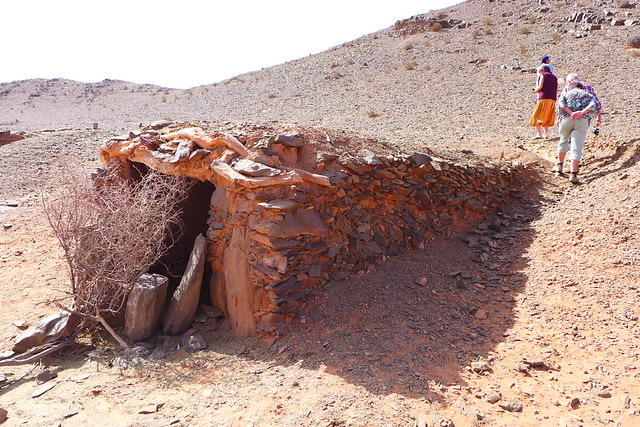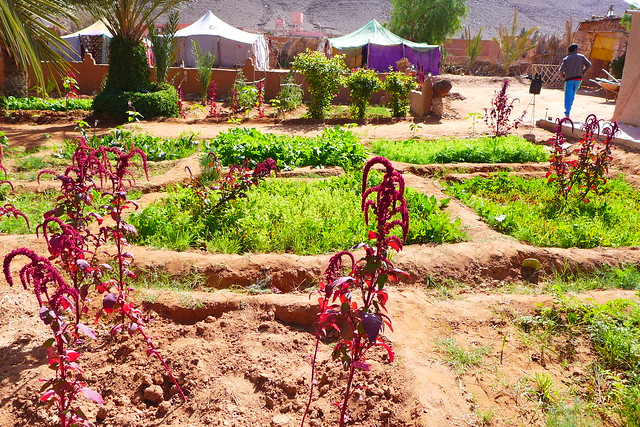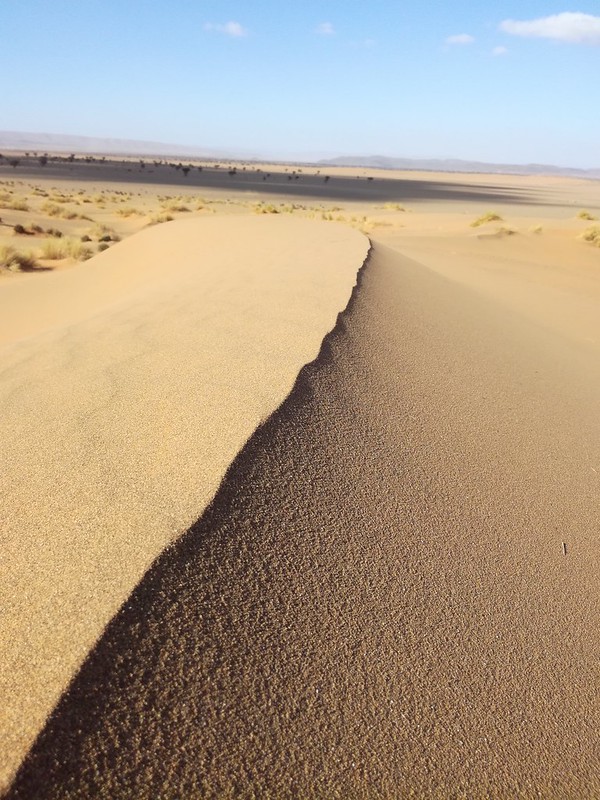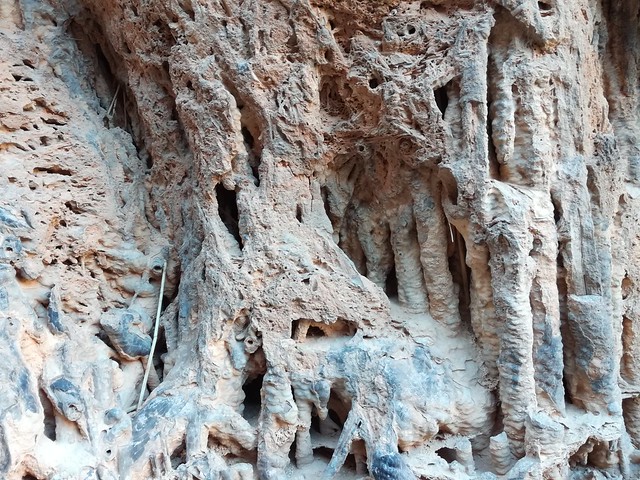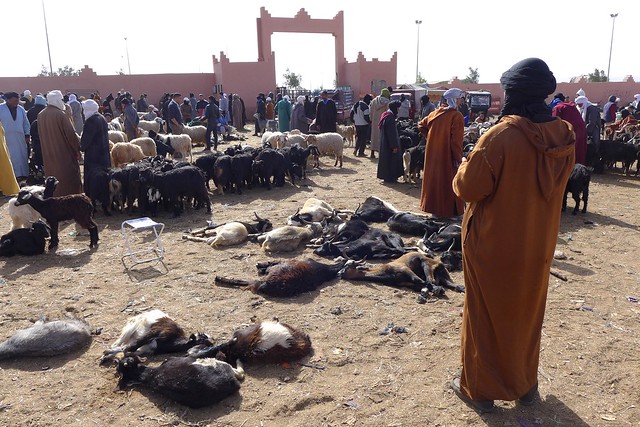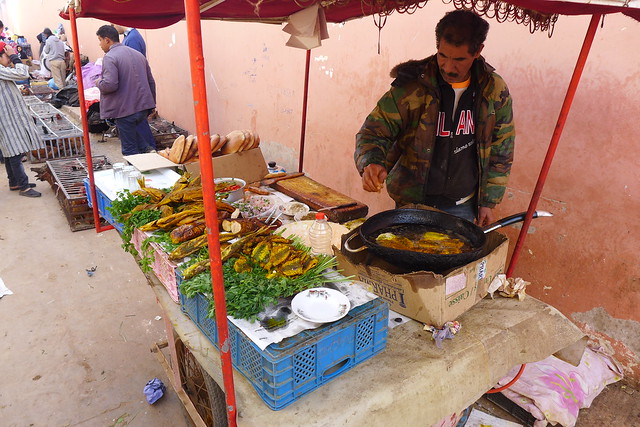Motorway
For the first time since entering Morocco, we decide to take the motorway. From Agadir it rises up steadily through high mountains, and once more, we are dumbstruck by the spectacle unfolding before our eyes – the rock formations, the colours, combining with the afternoon light.
We let the scenery sink in while we roll through this outer end of the Atlas mountains, emerging the other side and continuing on national roads through, yet again, another totally different landscape. By nightfall, we arrive at a reservoir, where we light a fire, have dinner and read through the web site of Marrakesh Organics, in preparation for next day’s visit.
Next morning we find a sparkling reservoir stretching out in front of us. After breakfast, we continue to travel through ever changing landscapes. By the evening we have reached Marrakesh Organics.
For more photos of this fantastic landscape, click here
Posted in Uncategorizedwith comments disabled.
Chases
We are woken early next morning by a chorus of barking dogs. I look out the window and see a very trendy-looking jogger being confronted by a pack of dogs. He’s jogging on the spot, obviously considering his options. Then he makes his decision and suddenly starts running right through the dogs who’ve positioned themselves to block his way. What follows looks very funny but is most likely not funny at all for the person experiencing it. I don’t know what hyperbole made him think he could outrun them, but his sprint quickly changes to a mad hop, as the dogs snap at his heels. Suddenly he changes tack and turns around to chase them. They think this is a delightful game. One dog had probably bitten him, because he singles it out and chases after it, trying to pick up stones and throwing them while running at full tilt. But he has no chance against them, and while the object of his wrath is easily escaping him, the others are again snapping at his heels. Eventually he gives up and sits down, exhausted. The dogs immediately leave off, having lost interest.
I know I shouldn’t laugh, but he looked so wrong in these surroundings, so tarted up, manicured and fake-bronzed, with gleaming white jogging clothes and a long mane of curly golden hair – the dogs probably thought they were defending their territory against an alien invader.
After breakfast, the first surfers arrive. One drives onto the beach and sits for a good 15 minutes in his car, staring at the waves. It’s not very impressive this morning, the wind having finally calmed down. It’s even calm enough for Frank and I to go for a quick swim! We get chatting to the surfer, a guy from Ariège in France, who, after listening to our travel experiences, recommends visiting his native area. You will like it there, he says. Well, we’ll go and have a look. It is lovely to feel how much smaller Europe has become in my mind through our travels, and especially now that we have stepped outside of it.
We say goodbye to each other and while we get Emma ready to depart, our surfer climbs into his car and is off to chase waves on a more promising beach.
Today, we want to travel northwards quite a bit, but first we have to make one more effort at finding LPG in Morocco. (We are on our second bottle now, and just imagine if we run out, it would be dramatic for Frank who needs to cook to feel happy! It’s his way of grounding himself and digesting our experiences. Mine is to play the bandoneon or write the blog, so I often find that while I practise, the kitchen cleans itself and dinner cooks itself. Lucky me 
We’re on a bit of a wild goose chase with this… The internet says, Gaz Afrique has LPG in Morocco, in fact, they hosted an international conference on it some years ago. There is a depot just north of Agadir, so that’s our first port of call. They send us to a fuel station, who direct us to another depot fifty miles South. We are clever enough to get someone to ring instead of going there. On the phone, we hear they don’t sell it anymore to the public. Apparently Marjane, the large supermarket chain in Morocco, used to do it and also some camp sites, but they all turn out to be dead ends, so eventually, we give up and take the motorway north out of Agadir.
If anyone knows of a source of LPG in Morocco, please let us know!
With hindsight, what we should have concentrated on buying, instead of chasing after LPG, was Amlou (Almond butter, mixed with Argan oil, which apparently is a speciality of the Agadir region), because it turns out that our two bottles of gas see us right through our time in Morocco, while the pot of Amlou in our cupboard seems to be evaporating at an alarming rate!
Posted in Uncategorizedwith 2 comments.
Agadir
Agadir is our first big city experience, previously having skirted around Fez and entirely avoided all other cities. We take the long route round the outside, to the north of the city. For once, park4night leads us the wrong way and we get lost in a rather posh area of Agadir, where every street has its own security personel in little huts, guarding large houses hidden behind high walls. Someone stops and tells us, in no uncertain terms, that we cannot stay the night here. While we are looking around for the car park listed in park4night, the spot marked on the map suddenly jumps to another part of the town. Half an hour later, we arrive safe and sound in an area that is much more to our liking – a large and varied souq at the end of the road, and just by the parking place, I spot a Hammam too!
We are both very tired, so we leave exploring to the next day.
I must have been very, VERY tired last night, because in the morning I find that I’d misread the sign – what I thought was a Hammam is actually a school for Immams! They are a bit alarmed as I walk in and ask for the Hammam opening times. I might well have been the first woman in that building 
The car park is lined with Peppertrees and one end of it has a little city garden, with many different plants growing in old tyres. We strike up a conversation with the owners who sit in their little green paradise. There are a number of interesting plants, including a perennial Basil bush and one plant that self-seeded and they are waiting to see what it will be. It looks like a citrus fruit.
We had chosen this car park because of the vicinity of a mechanic for campervans, but when we cycle past it, we can see it’s not the right place to have Emma’s nipples greased. Our other mission is to meet someone by the market square who will have a computer charger for us. Ardent followers of our blog may remember that right in the beginning of our time in Morocco, my computer blew its battery, and ever since, I’ve been dependent on proper electricity which has meant a lot more stays in camp sites than usual. This computer charger will free us once again, as we can plug it into a cigarette lighter point.
It’s a Monday morning and we cycle through a busy industrial estate until we come to a large road that leads in a big sweep towards the sea, circumventing the King’s summer residence. We stop by a guard and chat to him about how to reach the King. We want to speak or write to him about our experience of Morocco. We end up having a long conversation with the guard about travelling, languages and families, and about the friendliness of the Moroccan authorities – the gendarmerie, the police and the military.
Then we cycle, by the side of some steps, down to the bay.
Agadir has made a big effort to present a clean, spacious and Europe-oriented seafront, and I think they’ve done a great job. It’s not my cup of tea, and I’d not fancy holidaying here, but for what it is, it’s beautiful: clean beach, many restaurants and a large promenade which goes on for miles. We enjoy cycling along it all the way to the industrial harbour, where Morocco returns with a vengeance and we delight in diving into the fish market. We buy a good-looking fish from a vendor who proves the freshness of his catch by throwing flounders against the wall where they stick for a few seconds before slipping to the floor.
Cycling back to Emma is quite a task. We hadn’t noticed just how much downhill was involved. 10km later, we are back at the van, well worn out and ready to leave the hustle and bustle. As cities go, Agadir seems quite a good one, but we prefer the countryside. We pack up and head further up the coast. There’s a little town called Anza just north of Agadir, where we stop off on the cliffs for lunch and a rest, before driving on to find a bit of hopefully deserted beach. By sunset, we are on a surfer’s beach, host to a wild pocket of temporary shacks, stray dogs, women on donkeys and barefoot boys playing football, all over-shadowed by half-built apartment blocks.
For a few more photos, click here
Posted in Uncategorizedwith comments disabled.
Latifa and Smahim
That afternoon, we have an appointment with Latifa and Smahim who we’d met a few days before, when we cycled to their village along the seaside. Their children’s bikes needed some maintenance and Frank had offered to drive by, with all our workshop tools in the back of Emma, to fix them.
They live with their two children Sarah and Mohamed Ali on the edge of Douira, another little seaside village in the middle of the national park, where Latifa runs a tiny grocery store, out of a window giving onto the street.
After some Berber tea, Frank goes to repair the bikes and I sit in the sunshine chatting with Latifa, when who should come round the corner but Betoulla, the woman we gave a lift to about three chapters ago! She recognises us too and there’s a lot of laughter and explanation in about three languages to our hosts. It turns out, Betoulla is a travelling saleswoman, hitching from village to village, carrying her wares in a big bag on top of her head.
We arrange to give her a lift back to the main road later, which prompts Latifa to invite her to stay and share lunch with us all. There is a lot of humorous banter during the meal, as Betoulla is looking for a husband and a wife for her son. The wife should preferably be European, and she enquires about my two daughters – would they be interested in marrying a nice Moroccan man? I said, I could ask but that in our culture the young ones make their own decisions about who they want to be with/marry/ Ah, she shrugs, what a shame. But did I know of a rich old man who she could marry? preferably one who would die soon!
After dropping Betoulla back at the main road, we turn our attention to the mission of finding a recycling centre. The internet is not conclusive but there seems to be one in a village nearby, so we go in search. The first locals we ask don’t seem to know about it, but someone in a cafe knows and jumps into Emma to show us the way. Half a mile into the fields, there is is a fenced-off enclosure where construction work is going on. The foundations for a large building has been laid and there are huge mounts of predominantly agricultural plastic. We drive in and meet a few young people who tell us that the plant is going to be up and running in a couple of months. Once they understand that they don’t need to pay us for our rubbish(!), they gladly receive it and thank us for the initiative to pick the litter off the fields.
I have hope for Morocco. The general attitude and awareness for the plastic problem is much higher and more positive than anything we have experienced in Sicily in the last few winters, where people mainly thought we were bonkers picking up the stuff. Here, people help and also appreciate that while the situation has ameliorated since the national ban on plastic bags about two years ago, there’s much more to be done.
We finish off our day with a quick drive to the seaside for Frank to have a swim before heading off to Agadir, where we are due to pick up a parcel the following morning.
Posted in Uncategorizedwith comments disabled.
Misty Morning Adventures
This campsite, the village and its beach are amongst the loveliest places we’ve discovered in Morocco, but even so, this morning, we are ready to go. There’s a fine sea mist over everything as we rise at 6.30am. Everyone is still asleep when we leave the site at 7, as quietly as we possibly can, given that we are starting a 7.5t lorry!
We stop at the entrance of the village and walk to Yesin’s house to pick up our 5 bags of plastic rubbish. The village is still asleep…apart from one or two people. Yesin’s mother is up and bids us farewell. Whilst dragging the sacks back to Emma, we meet three people and have a little ‘rubbish conversation’. They are surprised and very grateful for what we have done and wish us good luck in finding a recycling centre, as they don’t know of any in the region (I have visions of living with these sacks of rubbish all the way to Marrakech!). We are so busy talking about rubbish that we don’t realise these people are hanging out at the entrance of the village in order to hitch a lift to the nearby souq!
Never mind, someone else must have picked them up, because they arrive at the same moment as us. Meanwhile, we’ve picked up another hitchhiker who shows us a car park that we’d never have found on our own. We pay the attendant a few Dirhams, persuade our hitchhiker that we will be able to find our way back to Emma (otherwise he would have accompanied us for the morning) and then we dive into another souq adventure. This one is huge, and it has a large animal section. Maybe other markets had them too, but we may have just missed them- you obviously have to get there early. It’s about 8am, and although the mist makes everything look sleepy, it’s rush-hour in the animal section. There’s a real throng of men and in between them animals of all sorts, sheep, goats, cows, chickens, ducks, pigeons and rabbits. There’s quite a cacophony going on, but it’s not the animals making the sounds but cars hooting their horns trying to get through an already overcrowded street. Goats are lying on the ground with three legs tethered, shaking with fear, eyeing up heavy boots coming perilously close to treading on them, little lambs are bleating for their mother who’s being pulled along on a thin string. Quite a few people are there just with one or two animals. There’s a lot of talking going on, eyeing up of animals, opening of mouths and checking teeth.
Frank and I squeeze through the men and animals (I seem to be the only woman on the market!), until we get to a calmer row of stalls. We are looking for a few things; vegetables, bread, maybe oil, maybe almond Amlou, maybe some tajine spices… at this time of day, many stall holders are meeting up behind one of the stalls, squatting on the ground to share some breakfast. We get invited, but politely decline and use the time to walk around the whole souq. One corner has a few young men with flame-throwers, singeing animal heads and feet. What for, we ask. Apparently, it’s good meat. It creates quite a stench.
This souq has everything, from construction materials to spices and vegetables, from handmade tools to freshly pickled olives and bergamots.
We find some good olive oil, agree on a price and have to go to a hole in the wall to pay for it. In our search for other things, we pass by the same stall several times, so that by the time we get to buy the oil (plus various spices and three kilos of prunes), we feel like friends to the stallholder. He motions me to come behind the till and serve his customers!
Near the veg stalls, there’s a long queue leading into a bakery. This must be good bread, so I queue while Frank goes to buy the veg. As I said, I’m the only woman in the market (And there are thousands of people), and I have a hoodie on, so some may not have realised my gender. The queue for bread is getting a bit unruly, people talking loudly around me and I’m being elbowed and the guy behind me is moving up far too close for my liking. Eventually I say ‘un peu de respect, un peu de distance s’il vous plait!’ and suddenly there’s a slightly shocked silence and an instant space opens up around me. From then on I get addressed very courteously and given space 
The bread is indeed worth waiting for, and once Frank has returned and can protect my back, we are inside the shack and able to see the baker in action
Visits to the souq are not for the fainthearted, and after a couple of hours of immersion, we are well souqed out and ready to return to the silence of the roaring sea. On our way out of town, we pass by some buskers who seem to have attracted a huge crowd by building up their act with a lot of talking. We don’t stop for long though, as we are tired and hungry. We don’t even get to drive the 10km back to the seaside but stop somewhere in a field to have lunch and a nap.
**********************
For more photos of this chapter, click here
Posted in Uncategorizedwith comments disabled.
Yesin
One afternoon there is a hollering outside the campground. I look over the wall and see two guys with two camels. Was it you who was looking for wood? They ask. Yes, but we hadn’t bargained for a Camel ride. It turns out though that the camels are there to transport the wood, and that in fact, we cannot come with, as the provenance of the wood is secret. We show them the size of our wood store and they tootle off. Two hours later, they return with two large bundles of lovely wood. While the camels are here, don’t you want to try sitting on them – take a photo? It’s a looong way down!
And now that you are up there, don’t you want to go fro a ride? A camel ride on the beach in the sunset is a must, it turns out, and Yesin’s animals are a fine pair. They are much larger than what we have sat on in the Erg Chebbi desert, and the saddles are a lot more comfortable too. When we go down hill though, it seems a long way down to the ground from up where I am sitting, and Yesin’s stories of my Camel being a racing Camel aren’t really confidence inspiring. I get a bit of vertigo but luckily nothing happens and we safely reach the beach, where he lets go of the lead and leaves us to steer the big animals ourselves.
What a joy to be riding along the beach in the late afternoon sun! We chat about Yesin’s life and he shares his joy at his work – he loves working with the Camels, walking them up and down the beach, meeting tourists, or transporting heavy goods for locals. He doesn’t like being in a house, and I can well believe that, looking at him, lightly stepping barefoot across stony and spikey ground and boiling hot sand.
I ask if the Camels like the sea. Oh, yes! Says Yesin, so I take my Camel to the surf. A large wave comes along and swills around her feet. She loves it and makes a gathering motion with one of her front feet to splash her belly. Yesin is busy receiving a phone call and for one moment he doesn’t pay attention, which is when my Camel moves to sit down and roll in the water. She is half way down on her front legs when Yesin comes hopping into the sea, shouting to stop her. He gets his trousers all wet but saves me from drenching myself and possibly being rolled upon. He can’t stop laughing about if for the next five minutes – neither can we!
Our Camel ride ends at his house where we are invited to have a cup of tea and meet his mother.
Yesin tells us about the beauty of the estuary and we agree to meet early in the morning to go and watch birds together.
He’s very smiley and gentle about it all, and so a Wood Action leads to a Camel Ride, leads to a Walk in the Estuary, and everything is framed by friendly cups of tea. Some Moroccans really know a thing or two about tourism!
The estuary is indeed worth an early rise. We see countless birds – cormorants, turns, curlews, large and small ibis, and even an osprey! On our way back we come across a couple of Mongoose – the first I have ever seen.
Yesin’s mother has made fresh bread, so we have breakfast on the terrace enjoying the view… except there’s a lot of plastic on the fields. After the breakfast, we take some plastic sacks and go to clean the fields. Yesin seems a bit uncomfortable about this, maybe because he needs to go and work on the beach, but we just go ahead and do it ourselves while he prepares his animals for the day. Very soon, we are joined by two young shepherds and between the four of us it doesn’t take very long to fill five large plastic bags which we store in Yesin’s compound to pick up with Emma the following day.
Back at the campsite, Frank is having a rugby crisis – none of the internets work sufficiently for him to watch the game – while I saw up the wood we received with the kind help of Tjorven and Josua, two children of our neighbouring families, and then we have a walk on the beach together. This is quite an extraordinary beach: there are many troglodyte caves, dug in by the locals, many of them are temporarily lived in, some are restaurants and others storage caves for the fishermen. The whole coast is riddled with them. Driftwood doors and banisters with heavy rope; any flotsam and jetsam that arrives on the beach is usefully re-employed. We particularly liked the little restaurant with it’s double entendre name
The evening bears a lovely surprise: 30 young musicians from Germany have arrived, and although we have missed their impromptu performance of light classical music in the tent, we are privy to the local’s ‘revanche': an evening of singing and dancing around the camp fire. A group of musicians have arrived with some traditional instruments, including a Rabab, the moroccan fiddle.
What is a bit strange though is that these are all men. The two women who during the day work in the kitchen, make a short appearance on the fringe of the circle but all the singing and dancing is done by the men. Roundabout midnight, we’re cooked – we’ve had a long day – and we return to Emma, but the singing and drumming under the stars continues on into the night, tumbling into our dreams.
*****************
For more photos of this chapter, click here
Posted in Uncategorizedwith comments disabled.
From plastic fantastic Hell to Heaven in Camping La Dune
Our next stop is Sidi Ifni, a favourite seaside town for surfers. The weather is cold and grey though, and after the windswept isolation of Plage Blanche, we can’t really find any joy in this town, especially as it starts to rain again, so we move on. We miss a couple of parking spots on the cliffs and end up pulling up at a campsite instead. It doesn’t quite look like our thing, but it’s getting dark and we are tired. We get a perfunctory, if not to say slightly frosty, reception from the son of the owner. I look down the campsite to see if there is space for us in between the row upon row of ‘plastic fantastics’, as we call them – campervans kitted out with all mod-cons, looking all shiny, and mostly inhabited by retired French people who don’t even deign to say hello to you. When we want to explore the end of the campsite before committing ourselves for the night, we are told to leave the camper at the top and walk. I go down while Frank waits in the van. There is actually space there, so I call Frank to come on down. As he drives Emma down, owner’s son follows on bicycle, obviously not trusting us to register and pay? Not a good start to our stay here…
The next morning, we discover a number of things:
a) The coast line looks suspiciously familiar – just like home in Devon or Wales, really, including a driving rain and a sharp, cold wind.
b) We really don’t fit in here. Everyone is up cleaning their vehicles!
c) Even in daylight, the French don’t say hello.
We get out of here asap.
If you are wondering which campsite to avoid, here’s a link. Unless you are French with a very fancy campervan, that is!
Next, we are heading for a national park just South of Agadir. Along a straight and fairly busy stretch of road, we pick up a Berber woman with a couple of large bags. She is the first female to accept a lift with us. We tuck her bags in the back and she climbs into the cabin. We have no common language between us, so it’s down to my rudimentary knowledge of Berber, but we introduce ourselves to each other and find out the basic family details of how many children and where they are etc. Again and again, she apologises for not being more clever, for not speaking any other languages, for not being able to write… walou, walou, she keeps repeating – nothing, nothing, while knocking herself on the head. However, I don’t get the feeling of a stupid woman at all, on the contrary, she seems quite clever in a feisty sort of way. We joke together despite the minimal amount of shared language. She shows us where to turn off to get to her village and as it’s not a big detour, we decide to deliver her home. When we drop her, she waves me into a shop and asks me to choose some sweets or biscuits, at pains to make clear to me that this is in payment for the lift but I decline. She doesn’t owe us anything, it was a pleasure to have her company for half an hour!
Somewhere along the line, we stop to hunt for Ammlou. We’ve seen a sign for a women’s cooperative, so we are hopeful. However, it turns out not only don’t they have Ammlou, but what is supposed to be a women’s cooperative is sharply guarded over by a very unsympathetic guy who manages to create an oppressive atmosphere around him. He invites us to look at the women working but I decline. I have no interest to increase the women’s discomfort. Somehow his presence makes it be like looking at some zoo animals! We have heard about these ‘cooperatives’, ostensibly run by women but in reality reigned over by some guy. We get out of there as fast as we can.
We wend our way through one or two more little villages before we arrive at La Dune, the campsite of Sidi Rabat. In stark contrast to last night’s camping, this is a small and very familiar, relaxed camp site. Every single vehicle is unique like our Emma, mainly inhabited by families.
We settle Emma in between two lovely families, both of whom are seasoned travellers who educate their children on the move, and for the next few days, we feel quite at home in this little community of travelling families and very friendly locals.
We instantly get swept into the camp site’s kitchen for a Berber tea and shown how to make a Moroccan-style cake and Tajine. There’s no rush to see our passports or get payment.
Sid Rabat has a very interesting coast line, with caves in a cliff and a long sandy beach. this is how it looks from above
However, when you get down to the beach, you find a whole different scenario:
For photos of this chapter, including some random goat pictures, click here
Posted in Uncategorizedwith comments disabled.
Plage Blanche
Despite the rainy and windy weather (incidentally, the locals are delirious – it hasn’t rained properly in two years!!!), we are drawn by the vicinity of the Atlantic ocean. On our way through Guelmin, we have lunch at a restaurant recommended by a local, where for 40 Dh Frank and I are fed lentil stew, bean stew and a plate of tripe ( Frank was expecting proper meat, but hey, when in Guelmin, do as the Guelminians do ;-), bread and water. All very local, including the price! From Guelmin, the road to Plage Blanche is a good 60km of almost no inhabitation, just rolling hills and the odd desert squirrel, a flock of sheep or a heard of goats, and some indefinable animal, something like an oversized brown guinea-pig, that pops its head out from behind rocks and disappears before we get a good look.
It’s quite meditative, if not to say soporific, to drive through this landscape, with the gently rolling hills and the road gently winding – the sudden end of the tarmacked road comes as a bit of a shock. We turn left and rumble on for another 200 mtrs to find ourselves on an amazing cliff, exposed to the wind and the roiling sea, with a view onto an estuary and miles of sandy beaches.
Behind us are a few army barracks but that’s the extent of human habitation. We spend 24 lovely windswept hours here, exploring the flora, chatting to the friendly soldiers, taking a long walk on the beach and enjoying a spectacular sunset.
It is on Plage Blanche that Frank and I celebrate the fourth anniversary of the registry office-part of our wedding (February 1st – we are a few weeks behind in our blog!). What can I say – I have relished every minute of being with this precious man. What a gift to have found each other, to be sharing adventures, families, events organisation, and many more things. And however busy or crazy it gets, at the end of each wonderful day there’s a warm embrace in bed. For those who are searching and may sometimes resign to thinking that this kind of closeness and mutual love is just a fairy-tale, don’t give up! It does exist!
Plage Blanche is the southernmost point of this winter’s journey. From now on, we are homeward bound…
*******************************
For more photos of this chapter, click here
Posted in Uncategorizedwith comments disabled.
On the tourist route for one day
The Moroccans really know a thing about tourism. Almost every campsite offers trips into the surrounding region. So far we have declined them, but Sala’s pitch is convincing, so for once we join the group of people who one morning climb aboard a rickety (but we are assured trusty) Landrover and set off. Ramdan, our 1.5-handed driver quickly shows that he exactly knows the width of his car as he passes walls and donkey carts at a hair’s breadth. Soon we leave the oasis out the back end and rattle off into the desert on paths that are hardly distinguishable as such.
Our first stop is the Oasis’s river. We tumble out of the car to take in just how much lower the river is these days, as we walk across an old dam that was built by the French last century. Sala reminisces about the amount of birds that one could see then. Back into the Landrover and we rumble on for a while. Suddenly Sala says there are the camels! It takes us a while to spot them, they are quite well camouflaged in this landscape of brown tones and bushes. We stop to watch them by a watering hole. Some of them have ‘chastity belts’ on – baby camels quite happily drink from any available adult female, so their udders get covered. When they are milked, a bit is left in for the young ones to drink. Mothers with very young camels get separated from the group so the little one can suckle any time it needs to.
We meet one such very young camel – just a few hours old, it has difficulty getting up onto its long, spindly legs. Several attempts end up in a heap on the floor, but eventually it stands and takes some wobbly steps towards its mother’s udder, gently being nudged by her in that direction.
Frank goes a bit closer to take some photos but is warned off by the deep growl and a sort of blubbery sound the mother makes as she gathers her spittle just in case.
Our next stop is a hot spring. Some company drilled for oil, unsuccessfully, plugged the borehole and left. Some years later, the water, salty and rich in minerals, had corroded the plug and shot out of the standing pipe. Now it has calmed down to a gentle flow and the locals have dug a little basin around it, and at just over 40 degrees it’s like a really hot bath. Frank and I came prepared, so we don our swimming costumes and hop in.
Hot springs can attract strange people, we’ve already seen this in the South of Spain. Here, an English man has taken a kind of guardianship of the spring, frequently ‘cleaning’ it by letting the water out and reshaping the basin, much to the annoyance of other users. Apparently he’s quite a barky type and has had a number of fairly serious clashes with several people, Sala being amongst them. Today he seems quiet, just sitting in his chair and watching the proceedings.
Back in the 4×4 and on to the next site, where we walk around a little mountain that is the focal point for a nomadic tribe. We see some ancient grain stores and hear how the nomads may stay here during the planting season and till, sow, grow and harvest their grains, stash them away in these underground stores, close the entrance with sticks and stones and move camp, leaving their harvest behind. It would be easy to break into one of these stores, but stealing is seen as such a bad activity (and used to be very heavily punished – now it ‘just’ lands people in prison, but previously people would lose a limb) that the food is safe until the family returns.
We pass an old cemetery and Sala tells us that someone (probably a foreigner) dug up one of the graves and found a whole load of treasures. He throws a stone into the middle of the cemetery to mark where the grave was robbed. Again, I muse, how come not more graves are robbed if people know there may well be treasures buried there? Sala shrugs his shoulders. We have a lot of respect for the dead. We don’t even enter a cemetery, let alone think of digging something up.
The picture above shows the cemetery. Small stones for children, large stones for adults. Grouped in two denotes a male, a single stone denotes a female. The building in the background is for someone of high standing in the community. According to Sala, this would be someone who was knowledgeable and contributed to the community through sharing his knowledge.
Our next stop is lunch with Hassan, a nomad who grows organic vegetables in his compound in a little village called Tadalt. This garden is a little paradise, so green and luscious in the middle of an arid landscape. Apparently, water is quite easily available at about 5 meters depth. There are a couple of buildings, one for the kitchen and one for the toilets, but apart from that, there are tents and a lot of open space to grow vegetables. It seems that for a Nomad, houses are for storing food but not to live in.
Those red plants in the foreground are aptly named Turkey’s noses!
We are served a delicious couscous with vegetables from the garden before a local guide takes us for a walk around the village. It looks quite deserted, but we are told it used to be thriving, with about 500 inhabitants. Then one day in the 1980ies, King Hassan II decided to relocate the whole village to Layoune, some 800km away – he needed people to populate disputed territory near the Algerian border. The military arrived unannounced and loaded everyone into buses. About 20% of the population managed to hide with their livestock in the mountains when the military came, and they still inhabit the otherwise deserted village. Why did the people not try to get back from Layoune? I wonder. They were offered everything there, good houses with water and electricity, education for their children, good health care etc. In the end, it didn’t matter too much to them where they lived, as long as they were well. Once the children were in school and a planting season had got under way, people were more likely to stay. But families got split? Yes, my brother lives in Layoune, I haven’t seen him since he left.
Our guide seems to have picked out Frank and me as the ones who might be gullible or crazy enough to buy his family’s 500 year-old tumble down Kasbah, or what remains of it, to be precise. I’d say he has a good eye; out of our group, we probably are the ones most vulnerable to this idea. So he tries to tempt us by showing us how the Nomads used to hide treasures by incorporating clay vessels into the walls of houses. He points out some of the hidey-holes and hints at many other potential places. He tells us that some Italians bought a Kasbah in the village, purely to hunt for treasure, found lots and then left again. And, I think just in case we are crazy enough to maybe even consider living here, he points out two wells, one at each end of the property. Paperwork is easy, he says, just a bit of Bakshish and the thing is yours. It’s practically a gift!
When we get back to Hassan’s, Sala has woken from his siesta and together, we head off to our next destination, a few sand dunes snuggling in between two black mountain ranges. It’s not the same, going to a place like this with a group of people, as when I’m on my own – I don’t get the same feeling of peace and quiet – nevertheless, I manage to break away and capture some more beautiful photos of the play of sand, wind, light and shadow. I love how the wind creates such a sharp line of sand on the top of the dune.
It is quite windy today – on the next bit of road, we see great clouds of sand passing and there are times when the car starts to skid as if on ice as it travels across sand-covered bits of road. Soon, we turn off the road once more as we take off up the hill. Ramdan expertly chooses his way amongst a myriad of possible paths, to get us to a series of cascades just as the sun nears the horizon. We take a bit of time to walk around in this extraordinary canyon. There are some strange rock formations, they look like fossilised roots and plants –
Our last stop of the day is a kasbah that has been turned into a museum. A large and jovial Berber awaits us. There’s no electricity in the kasbah, so we all turn on our mobile torches to view an eclectic collection of household items, furniture, clothing, agricultural tools etc. Explanations are punctuated by appreciative hollering and clicking sounds from the guide himself. In the last light of the day, we are shown into Berber tent in the courtyard where a whole lot of jewellery is for sale. Now it’s up to us to make some appreciative sounds but without necessarily indicating the wish to buy.
When we return to the campsite, we are well tired, but what a day it’s been!
That night, I wake up to the most unusual sound of rain drumming on our roof!
************************
For LOTS more photos of this chapter, including so many cute baby camel photos, click here
Posted in Uncategorizedwith comments disabled.
Tighmert
We move on to an Oasis called Tighmert (near Guelmim), where the Camp site Aain Nakhla is run by Sala, a Berber who returned to his roots after having spent 18 years working in Germany. This campsite has a different flavour to any we’ve ben before. Every evening, there is an invitation to come and sit by the fire (or, if it’s windy or rainy in the berber tent) and share stories and music. Sala has many friends in the village, some still from his school days, and they like to drop by if they know they can do a bit of the Berber dancing – a strange version of moshing on your knees. The guys kneel as close to each other as possible and then fall into a trance-like, rough sideways sway, while singing and clapping. Someone will play a drum, but they don’t need anything else for this to take off; just a group of friends and some cushions to soften the wear on their knees. Even the young ones are taking part and really throwing themselves into it.
Compared to that, our European contributions are quite tame… during our stay, there are several guitarists at the campsite, sharing their repertoire from the likes of of Crosby, Stills, Nash and Young.
Ali hitches a lift with us as we leave the campsite one early Saturday morning to go to the Camel Souq in Guelmin. We have a couple of things we’d like to buy and he promises to help us find them, but once we are there, he seems quite eager to make his own way and we are really quite glad to be left to our own devices. The early morning sun warms us as we are strolling through the animal part of the Souq. This could be complete mayhem – camels running around freely and plenty of sheep and goats about, but it’s actually quite calm. Many of the goats and sheep are hobbled, some of them so much that they are lying on the ground, watching proceedings from below with a worried, beady eye. This market isn’t too crushed with people, but I’ve seen others where the poor goats’ heads come perilously close to being trodden on, and understandably the beasts were shaking with fear. Here, it looks more like a slightly unsettling resting position.
It’s breakfast time, so we are on the look-out for one of those stalls that deep-fry fish deliciously in copious amounts of Moroccan spices, before sticking them inside some flat bread and heaping on some Moroccan tomato and onion salad.
Once suitably reinforced, we shop for our vegetables and beldi lemons (Bergamots). We also are on the lookout for Amlou, but can’t find any that doesn’t contain sugar. We’re also on a hunt for an electric cable, but those at the Souq are all of ephemeral quality, so we decide to stop in town on our way back home.
Today is the opening day of the Six Nations, so Frank spends the rest of the afternoon in the berber tent, watching two rugby games in succession, while I get in the writing zone and catch up with blog chapters.
Posted in Uncategorizedwith comments disabled.
